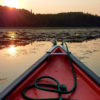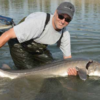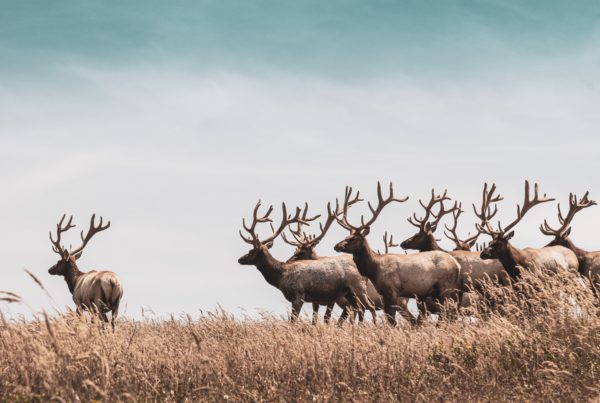Simply put, field care of your knife is maintaining the edge on your knife so that it doesn’t become dull to the point that it is no longer effective for the task at hand and you need to actually take the time to fully sharpen the knife.
Sharp knives are actually safer to use than dull ones. Dull knives force you to apply more pressure to achieve the cut you want, and pressing down harder can cause the knife to slip. So, not only do you cut yourself, but you cut yourself worse because you were applying more force to the knife. A sharp knife is also less tiring to use than a dull knife and makes cleaner, more accurate cuts. As a knife dulls it becomes an unsafe and ineffective tool.
As a blade dulls, the harder it will be to re-sharpen to a fine edge. The reason that a knife dulls is that the thin metal or wire on the cutting edge bends and begins to roll. Keep using the knife as it dulls, and small bits of metal actually begin to break off and chip away. The more this happens, the more work it will require to get the blade back to a sharp edge. Dressing out your deer, filleting your fish or doing camp chores with a knife that’s getting dull is not only labour intensive it is also unsafe. The good news is that it’s really easy to maintain your knife in the field. All that is required is taking a minute or two and applying some very simple techniques while employing the use of any number of the in-field sharpeners that are available today.
I typically like to carry three lightweight and easy to use sharpeners in my day pack or tackle box.
The first is a very small handheld device that uses carbide and ceramic notches to sharpen and hone the blade. Their strength is their small size and simplicity. You can keep it in your daypack or a pocket. You then simply pull the blade through each notch a few times, starting with the carbide notch and progressing to the ceramic notch to touch up the edge. The only issue with these is that they have a set angle to the carbide or ceramic inserts so if your blade was not originally sharpened at those angles they will not work well and may change the angle of your edge, making your knife difficult to resharpen.



Next on my list of must-haves that I use a lot is a diamond round steel (EZE Lap, or Lansky) that I carry with me every time I go out. It is collapsible and fits easily into your daypack or pocket. It is very easy to use and is quite similar to the steel you used back home when you sharpened your knives before you left on your trip. Use just as you would your kitchen steel, a few swipes in each direction will bring back the edge quickly. I may use the diamond steel two to four times during the course of dressing out a deer. The idea is to keep an edge so that you can complete your task safely and with minimal effort.
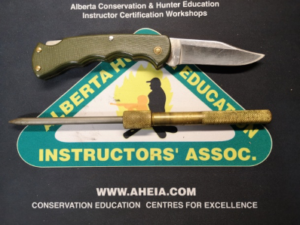

The other sharpener that is always in my day pack is a very versatile tool and will not only help you keep an edge as you work but you can also use it to sharpen your knives if they start getting dull from nicks and chips on the edge that can happen when hitting bone or hard objects during strenuous use. The Work Sharp Field Sharpener. Again, this sharpener is easy to use and will fit nicely in your daypack. You can use it to keep an edge by giving your blade a few strokes on the fine sharpening plate followed by a few strokes on the ceramic rod. If you maintain a 20 degree edge on your knives this tool also has built-in 20 degree guides for those of us that have a hard time holding a consistent angle when sharpening knives. If the need arises, you can do a full sharpen of your knife by starting off with the coarse diamond plate followed by the fine plate then the ceramic rod. You can also use this field sharpener to touch up your fish hooks or broadhead arrows.

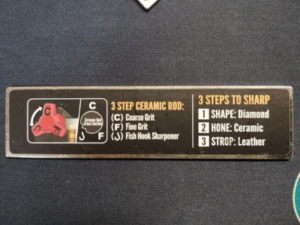
Last but not least, if I have neglected the edge on my knife to the point that I have to restore the edge I will carry a pocket-sized, two-sided stone or a small Arkansas stone. You should not have to use a stone if you maintain the edge on your knife as you use it. I only carry these to use in an emergency. Use the pocket stones if you need to and have the time to use them properly. Use them as you would your larger, conventional style stones that you have at home.

On a final note, whichever field sharpening tool you happen to pick, make sure that it does not remove noticeable flakes of steel, these style sharpeners will ruin your blade. I would advise that you practice with your new sharpeners on a cheap blade so that you become comfortable with their use before using them on your good knives.
Keep your knife sharp and it will last a lifetime and never let you down.

